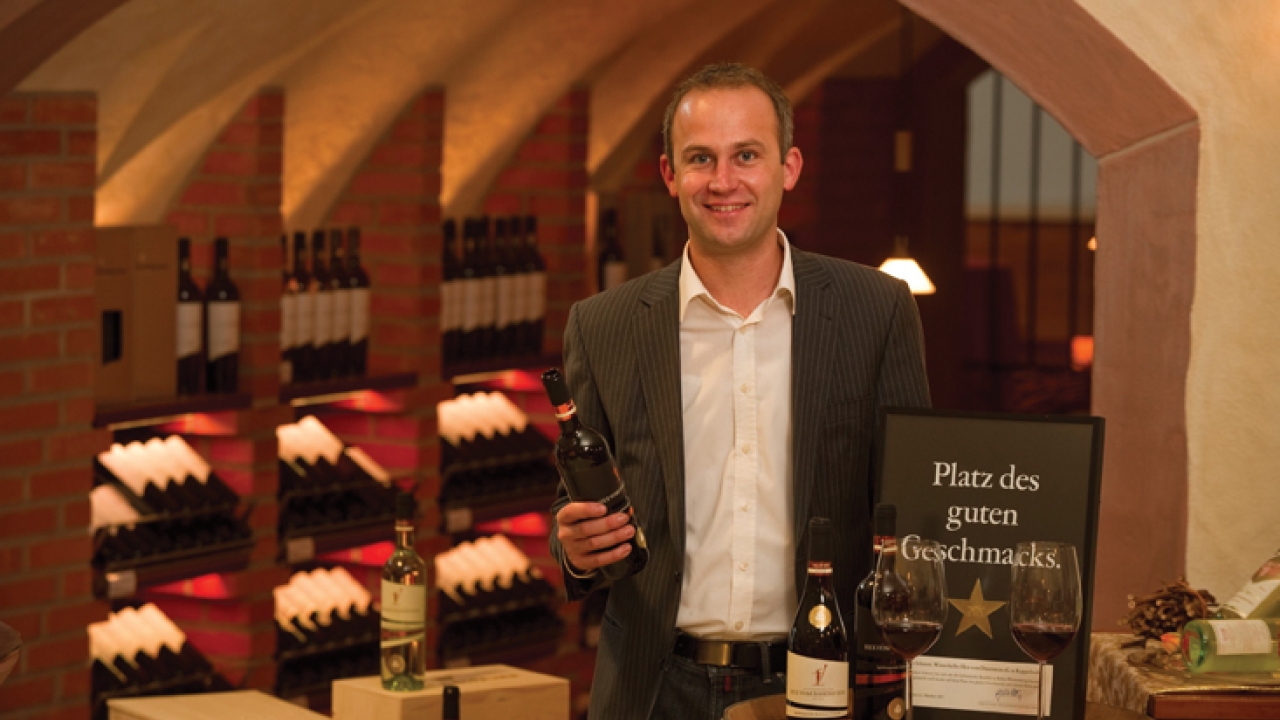Witch label flies off shelf

Redesigning an established wine label requires innovative design, excellent print technique and high caliber marketing, as Andy Thomas discovers
When 51 winegrowers in the Baden region's Acher valley established a cooperative in 1934, they called the entire vineyard location around Kappelrodeck ‘Hex vom Dasenstein’ (‘Witch of Dasenstein’) in honor of an ancient local legend.
Every year, more than 1.8 million wine labels with the distinctive witch branding are printed for the co-operative by local label converter Achertäler Druckerei.
This is not mere ‘contract’ work. Martin Bruder, the former owner of Achertäler Druckerei, was instrumental in renewing the ‘witch’ brand, bringing his friend the renowned Alsace artist Tomi Ungerer to Kappelrodeck to design labels for several special-edition red wines.
Last year the winegrowers cooperative decided to have all their wine and sparkling-wine labels redesigned. Graphic artist Rüdiger Ertel was commissioned to reinvent the witch image in a series of designs which employed ornate, embossed serif lettering requiring the use of high end combination printing techniques.
Achertäler Druckerei selected a new Codimag Viva 420 Aniflo press for the work, operating alongside its existing Codimag Viva 340 press supplied by Codimag’s German agent Chromos.
‘The advantages of this printing press are obvious,’ says Klaus Sedlmayr, head of printing and purchasing at Achertäler Druckerei. ‘A 60 percent saving in waste paper and 30 percent time saving compared to conventional solutions. We also get offset quality at a width of 420mm, 100 percent reproducibility and standardization.
Above all, the four-cylinder offset short inking system guarantees constant and reproducible print quality for manufacturing self-adhesive labels.’ The press is supplemented by two magnetic cylinders and a Kocher+Beck GapMaster.
For printing high-precision tactile special effects with intricate lettering, a screen-printing unit was integrated along with Kocher+Beck’s TecScreen 88W screen-printing material.
The Hex vom Dasenstein winery labels require precise and crisp printing of the serifs in the distinctive Galliard font. The TecScreen fabric allows the printing of tactile varnishes with a 40µm layer thickness.
Kocher+Beck also installed screen exposure and mounting equipment at Achertäler Druckerei, allowing the converter to produce a print-ready screen in less than an hour.
As with all wine label work, printing was to a very tight deadline for the first 1.8m labels, a job made more complex by the requirement for 30 special colors to cover the different ranges.
Company owner Günter Dresel says the new Aniflo press with the Kocher+Beck TecScreen material ‘proved its technical abilities excellently during production of this order.’
Rebranding an established product always carries a small risk in terms of
shelf recognition, but vintner Marco Köninger proclaimed himself ‘very impressed with the outstanding printing results. I am sure that the witch's rejuvenation will do justice to the wines of Hex vom Dasenstein.’
Pictured: Vinter Marco Köninger
This article was published in L&L issue 5, 2012
Stay up to date
Subscribe to the free Label News newsletter and receive the latest content every week. We'll never share your email address.


